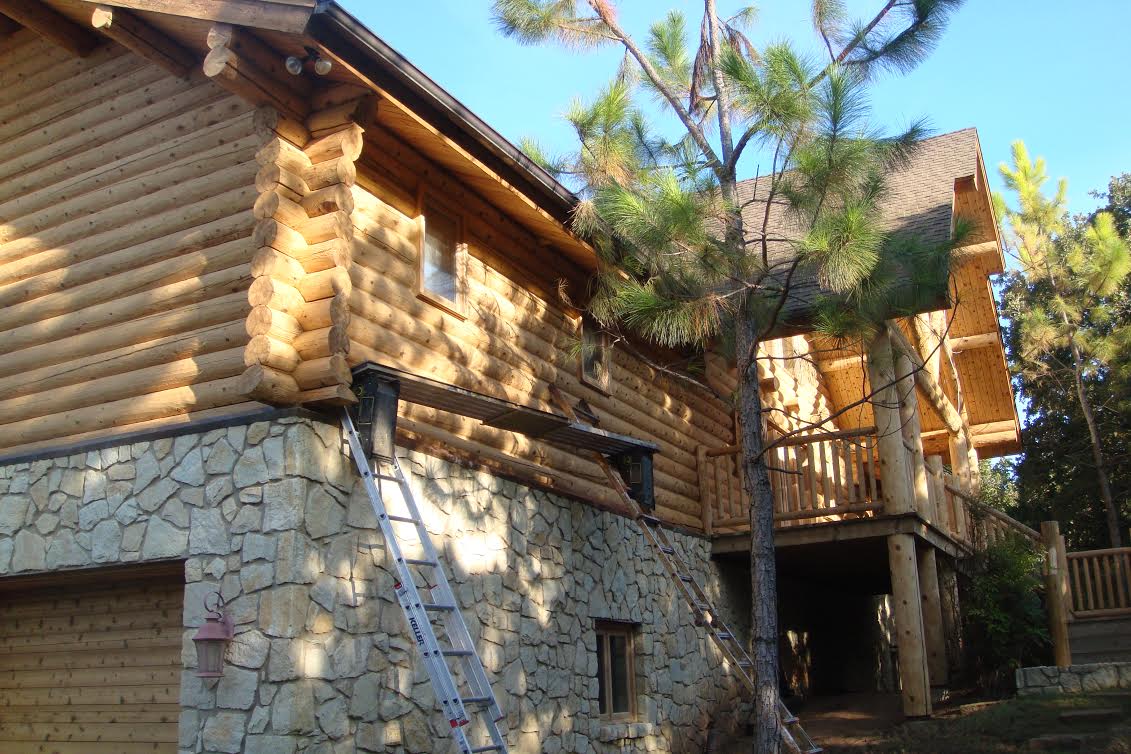
Log homes, while durable and beautiful, have a few natural enemies that can affect their longevity and structural integrity. These enemies attack in all seasons, so you must take care to not let down your guard when it comes to the protection of your home. Here are the more common occurrences:
Wind and Storms:
High winds, especially in storm-prone areas, can damage the roof, windows, and exterior of log homes. Falling trees and flying debris are also risks. Water can seep into your logs and cause log rot and other structural damage.
Prevention: Regularly trim nearby trees and maintain a sturdy roof to withstand harsh weather.
Freeze-Thaw Cycle:
In colder climates, the freeze-thaw cycle can cause logs to expand and contract, leading to cracks or even splitting over time. Learn more about “checks” and “cracks” here.
Prevention: Ensure the logs are well-sealed and inspect for cracks in the fall to prevent water infiltration before winter.
Moisture
Rain, snow, and humidity can lead to wood rot, mold, and mildew if the logs are not properly treated or maintained. Water can seep into cracks and cause decay, especially in areas where logs meet or are exposed to the elements.
Prevention: Regularly apply sealants, ensure proper drainage around the foundation, and keep gutters clear to prevent water buildup. Here are some additional tips when addressing mold and your logs.
Sunlight (UV Exposure):
Prolonged exposure to direct sunlight can cause **logs to dry out and crack**, leading to structural weakness and aesthetic damage. UV rays also fade the wood, making it more prone to degradation.
Prevention: Apply stains or UV-protective finishes to help shield the logs from the sun’s harmful rays.
Insects:
Termites and wood-boring beetles (like carpenter ants or powderpost beetles) are the most common pests that attack log homes. These insects feed on wood and can cause severe structural damage if not addressed early.
Prevention: Treat the logs with insecticides, use wood preservatives, and keep vegetation away from the foundation to reduce moisture and shelter for pests.
Fungus and Wood Rot:
Wood-decay fungi thrive in moist conditions and can slowly break down the structural fibers of the wood, leading to rot. Dry rot is particularly dangerous as it can spread even in relatively dry environments.
Prevention: Ensure proper ventilation, keep logs dry, and inspect for signs of rot regularly.
Rodents and Wildlife
Rodents like mice, squirrels, or raccoons may try to burrow into or nest inside log homes, especially in attics or basements. Birds and woodpeckers can also peck at the wood, leading to small holes.
Prevention: Seal any entry points, use mesh screens, and inspect regularly for signs of wildlife intrusion.
With proper maintenance and care, you can minimize the impact of these natural enemies and extend the life of your log home. If you need assistance with a Maintenance Inspection, contact the team at 888 Log Guys today.








